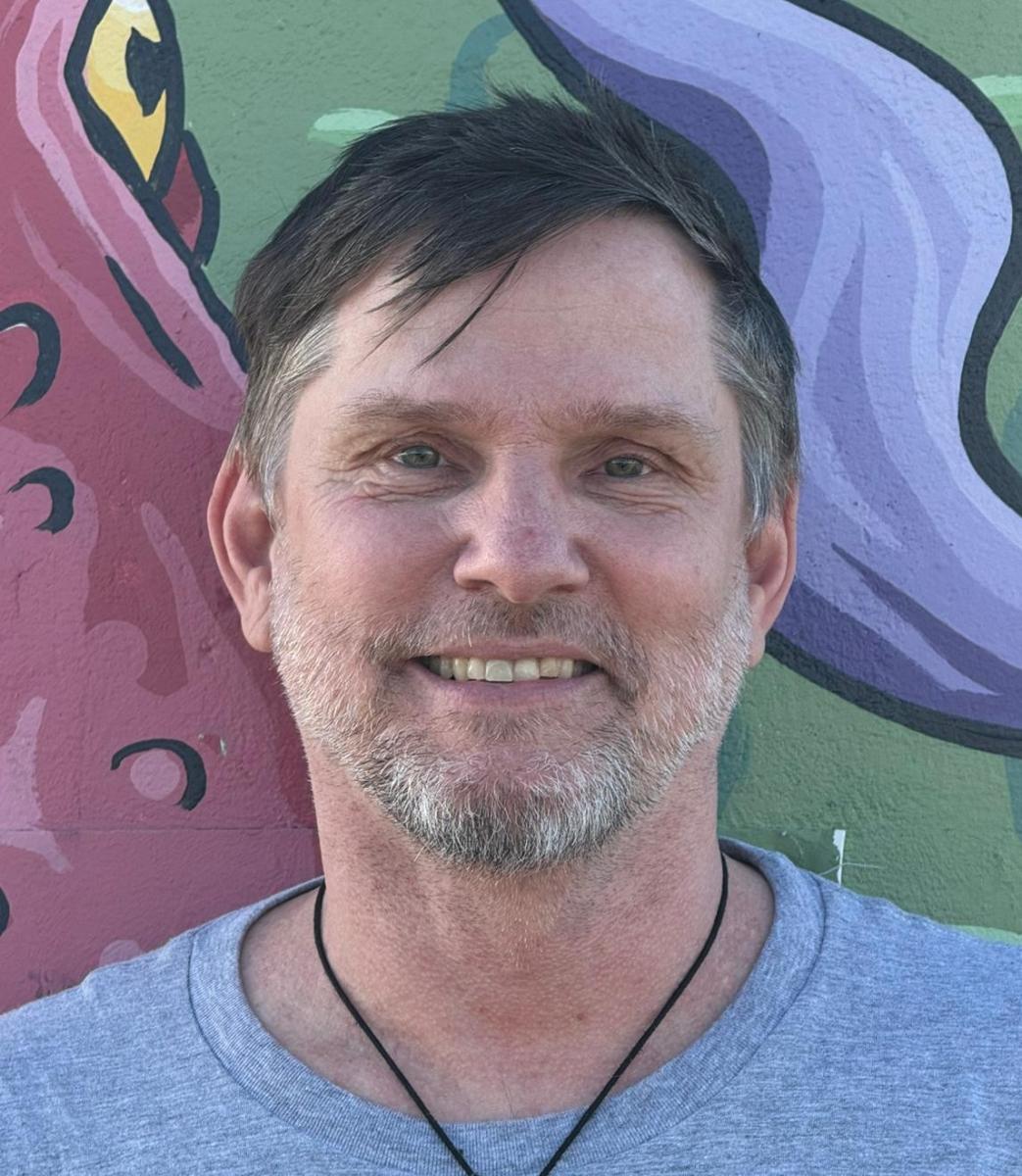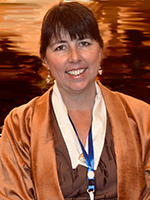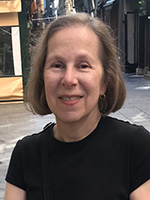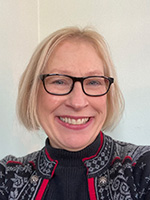Citation for Distinguished Service
Citation for Distinguished Service
The Citation for Distinguished Service recognizes ethnobiologists who have served the Society and its members in indispensable ways over many years. The recognition highlights the contributions of service leaders whose work, often behind the scenes, has been vital to the Society. Members of the Executive Committee may select up to three recipients on an annual basis. Recipients of the Citation for Distinguished Service are recognized at the annual conference.
Citation for Distinguished Service Recipients
2025 Recipients
Liz Olson
 The Society of Ethnobiology has been an integral part of my professional journey and personal growth. Since joining in 2013, I have proudly served the organization in various capacities, including as President (2020-2021), Vice President (2019–2020), Conference Coordinator (2014–2020), and Awards Coordinator (2013–2014). My work with SoE has allowed me to collaborate with incredible colleagues, foster diversity and inclusion through initiatives like NSF and Wenner-Gren funded conferences, and contribute to advancing the field through publications and editorial roles. I remain deeply inspired by the Society's mission to honor the interconnections between people, plants, animals, and cultures.
The Society of Ethnobiology has been an integral part of my professional journey and personal growth. Since joining in 2013, I have proudly served the organization in various capacities, including as President (2020-2021), Vice President (2019–2020), Conference Coordinator (2014–2020), and Awards Coordinator (2013–2014). My work with SoE has allowed me to collaborate with incredible colleagues, foster diversity and inclusion through initiatives like NSF and Wenner-Gren funded conferences, and contribute to advancing the field through publications and editorial roles. I remain deeply inspired by the Society's mission to honor the interconnections between people, plants, animals, and cultures.
Beyond my leadership roles, SoE has provided a platform to share my research in ethnobotany, medical anthropology, and conservation, spanning studies from Mexico to the US. Personal highlights include presenting on topics such as indigenous knowledge and health sovereignty, contributing to Special Issues in Ethnobiology Letters, and mentoring students in their early forays into ethnobiological research. The friendships and professional networks I’ve developed through this Society have enriched my life profoundly and continue to guide my work.
Today, I apply my ethnographic expertise as a Senior User Experience Researcher in industry, leveraging my background to create intuitive, human-centered design solutions. Though I’ve transitioned from academia, I remain actively involved in SoE, recognizing it as a vital space for interdisciplinary collaboration and mentorship. My enduring connection to the Society reflects not only my appreciation for its role in shaping my career but also my affection for its vibrant, supportive community.
James Welch
 My first exposure to the Society of Ethnobiology was at the annual meeting in Oaxaca, Mexico, in 1999. Between shots of the Society of Ethnobiology labeled small batch mezcal flowing from pourers at the intersections of paths throughout the botanical garden, I knew I had found a scholarly community like no other. It took me another decade to become more involved, but my link to ethnobiologists through the Society became central to my academic worldview, even when I worked with disciplines like epidemiology and demography.
My first exposure to the Society of Ethnobiology was at the annual meeting in Oaxaca, Mexico, in 1999. Between shots of the Society of Ethnobiology labeled small batch mezcal flowing from pourers at the intersections of paths throughout the botanical garden, I knew I had found a scholarly community like no other. It took me another decade to become more involved, but my link to ethnobiologists through the Society became central to my academic worldview, even when I worked with disciplines like epidemiology and demography.
I am motivated by a passion for solution-oriented research in anthropology, ethnobiology, and community health. Through partnerships with Indigenous communities in Brazil, especially A'uwẽ (Xavante) Indigenous communities in Central Brazil, our work integrates diverse academic disciplines and cultural frameworks to understand and promote physical, social, environmental, and spiritual wellness. I have participated in studies and initiatives addressing territorial rights, environmental conservation, digital sovereignty, social identity, foodways, epidemiology, and demography. For over a decade, I served as a researcher in human ecology and public health with the Brazilian Ministry of Health (National School of Public Health, Oswaldo Cruz Foundation, Rio de Janeiro). I recently published a book with the University of Arizona Press, in the Global Change/Global Health series, entitled Persistence of Good Living: A’uwẽ Life Cycles and Well-being in the Central Brazilian Cerrados. I am now refreshing my career with a look towards international human rights.
Over the years I participated as editorial assistant for the Journal of Ethnobiology (2001–2002), co-editor of Ethnobiology Letters (2011–2018), author of the Contributions in Ethnobiology monograph series book Sprouting Valley: Historical Ethnobotany of the Northern Pomo from Potter Valley, California (2013), Promotion and Outreach member of the Board of Directors (2013–2016), and Associate Editor of the Journal of Ethnobiology (2019–present).
2024 Recipients
Denise Glover
 I first became involved with the Society of Ethnobiology in 2001, when I presented one of my first papers on classification of plants in Tibetan medicine at Fort Lewis College in Durango. But my heart and soul really became linked to SoE when we hosted the annual conference at the University of Washington--Seattle in 2003. Several other graduate students and I assisted Gene Hunn with coordination, organization, and other volunteer work. I even drove one of the University vans for our fieldtrip up over Snoqualmie Pass to eastern Washington. I'll never forget when Cecil Brown asked me "So, how long have you been driving these vans [thinking I must have been hired help]?" to which I replied, "Oh, about 15 minutes" to which his eyes widened in concern! But we made it just fine (I took the responsibility of transporting some of my ethnobiological heroes very seriously) and my eyes were opened to the depth of knowledge our fieldtrip co-hosts James Selam and Gene Hunn shared with us all about the land and various species living in the area of native Sahaptin speakers. I was hooked.
I first became involved with the Society of Ethnobiology in 2001, when I presented one of my first papers on classification of plants in Tibetan medicine at Fort Lewis College in Durango. But my heart and soul really became linked to SoE when we hosted the annual conference at the University of Washington--Seattle in 2003. Several other graduate students and I assisted Gene Hunn with coordination, organization, and other volunteer work. I even drove one of the University vans for our fieldtrip up over Snoqualmie Pass to eastern Washington. I'll never forget when Cecil Brown asked me "So, how long have you been driving these vans [thinking I must have been hired help]?" to which I replied, "Oh, about 15 minutes" to which his eyes widened in concern! But we made it just fine (I took the responsibility of transporting some of my ethnobiological heroes very seriously) and my eyes were opened to the depth of knowledge our fieldtrip co-hosts James Selam and Gene Hunn shared with us all about the land and various species living in the area of native Sahaptin speakers. I was hooked.
It’s been my honor to serve the Society. I was Conference Coordinator from 2009–2014, I was Treasurer from 2014–2020, and I currently serve as an Associate Editor for the Journal of Ethnobiology. The Society has been my extended family, where I have been able to grow and mature as a scholar and a person. For those reasons, I have treasured relationships in SoE and I have dedicated myself to its causes (and I even wrote a song about ethnobiology and the Society!). There is no other group of people (and academics with heart) that I would rather hang with.
I am currently a Lecturer in the Department of Anthropology at the University of Washington, where my foundational love for SoE began all those years ago.
Ginny Popper
 The Society of Ethnobiology is near and dear to my heart. Dick Ford first told me about the Society when I was a graduate student at the University of Michigan. I attended my first conference in 1981 at Columbia, Missouri and gave my first paper at the 1984 conference.
The Society of Ethnobiology is near and dear to my heart. Dick Ford first told me about the Society when I was a graduate student at the University of Michigan. I attended my first conference in 1981 at Columbia, Missouri and gave my first paper at the 1984 conference.
I served as Secretary/Treasurer of the Society 1999–2002, when I put renewal notices into a mailbox and I tediously dialed credit card numbers into the phone to process payments. Heather Trigg and I co-edited the Journal from 2008 to 2013.
The Society played a formative role in my development as a paleoethnobotanist. I loved the intimacy of the meetings, where my colleagues became my friends. Listening to papers on ethnobotany and linguistics broadened my research approach. Senior researchers were extremely generous with their time and advice as I navigated these new disciplines. I’m grateful to the Society for all it has been to me, and still is.
Heather B. Trigg
 Currently, I am a Research Scientist at the Fiske Center for Archaeological Research at the University of Massachusetts Boston, and Graduate Program Director for the Historical Archaeology MA program. I first became aware of the Society of Ethnobiology in 1985, when my advisor, Dr. Richard I. Ford, enabled me to attend the 8th annual Ethnobiology meeting in Boston. It was my first professional conference, and it was exciting because I got to meet the people whose work I had been reading. I was immediately taken by how supportive the society was of student research. Years later, in 2009, when one of my students won The Barbara Lawrence Award for Best Student Paper, it was one of my proudest moments.
Currently, I am a Research Scientist at the Fiske Center for Archaeological Research at the University of Massachusetts Boston, and Graduate Program Director for the Historical Archaeology MA program. I first became aware of the Society of Ethnobiology in 1985, when my advisor, Dr. Richard I. Ford, enabled me to attend the 8th annual Ethnobiology meeting in Boston. It was my first professional conference, and it was exciting because I got to meet the people whose work I had been reading. I was immediately taken by how supportive the society was of student research. Years later, in 2009, when one of my students won The Barbara Lawrence Award for Best Student Paper, it was one of my proudest moments.
The society has been a source of inspiration for me, from the founding members whose names are synonymous with ethnobiology to the influential research that the society continues to publish. As one of the journal editors, I was lucky to work with officers and board members who showed incredible energy and dedication to the society and the discipline.
My first opportunity to support the society was minor: at the 23rd annual meetings in Ann Arbor, I led a tour of an ethnobotany trail that I had helped install at the University of Michigan’s Matthaei Botanical Gardens. For the most part, I enjoyed the society from the sidelines. I was finally able to give back in a substantive way in 2008 when Virginia Popper mentioned that the society was looking for a new journal editor. We decided that working together sounded appealing, and both edited every paper, trying to help the authors showcase their research to the best effect. In doing so, I learned a great deal about effective presentation and clarity of writing for my own work. For this opportunity and the scholarly inspiration through the years, I owe a debt of gratitude to the society.
